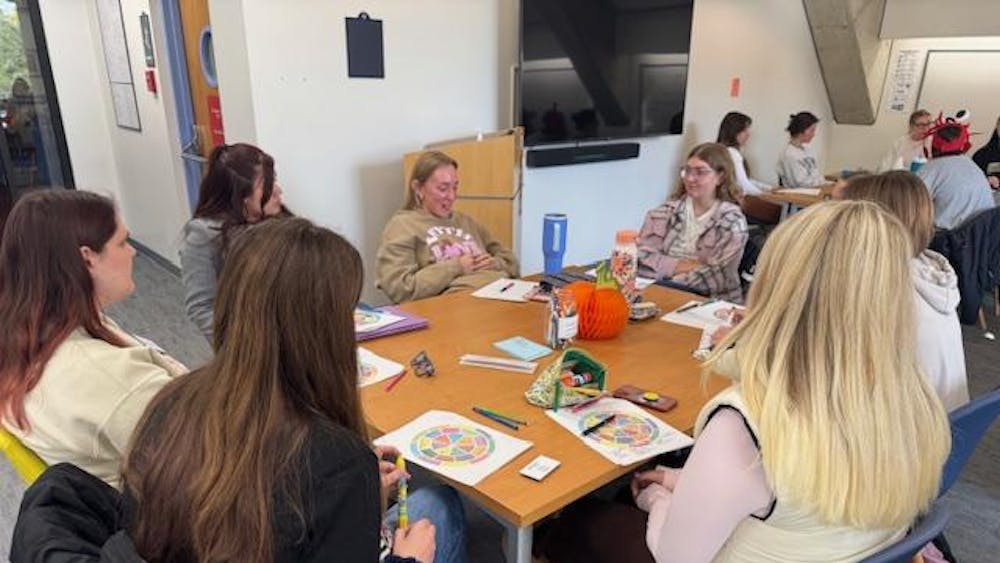Rebecca Whelan, Notre Dame associate professor of biochemistry and chemistry, recently co-authored a new study in collaboration with the University of Wisconsin-Madison on the CA125 biomarker found in ovarian cancer. Although this biomarker is already being used for diagnostic purposes, Whelan and her collaborators developed a new way to isolate the protein from a bodily fluid called ascites.
Whelan said her research focus has always been centered around ways to improve women’s health and, particularly, ovarian cancer.
“Everything that I do fits into a box for ovarian cancer or women’s health,” Whelan said. “We have played in a lot of different spaces, but it’s always motivated by this pressing need to make ovarian cancer diagnosis happen earlier.”
Ovarian cancer, if caught early, has a survival rate of 90%, Whelan said, but the diagnostic tools in use today are not optimized for early detection.
Whelan said her inspiration to initiate this most recent study came from speaking with a group of ovarian cancer survivors at the Notre Dame Harper Cancer Research Day a few years ago, and they had gotten her to start thinking about what information is held inside the ascites fluid.
“A negative outcome that often happens with advanced metastatic cancer is the accumulation of large amounts of fluid in the abdomen, and that condition is called ascites,” Whelan said. “And what I realized is that fluid, which is in direct contact with all of the internal organs and with the ovarian tumors, it’s drained out and then it’s thrown away. And I thought to myself, ‘What if there’s interesting information in that fluid there right now that has been treated as waste?’”
Because of an ongoing collaboration with research doctor Manish Patankar at the University of Wisconsin-Madison, Whelan had access to an archive of ovarian cancer patient samples of the ascites fluid.
Whelan said the missing piece of her puzzle came to her in the form of another professor at the University of Wisconsin-Madison, Mark Etzel, who eventually became one of the study’s co-authors.
“The other sort of piece of the puzzle that really helped us fall into place, is we expanded our collaboration to involve a chemical engineer in the food science department at Wisconsin,” Whelan said. “His name is Mark Etzel — he developed his expertise in being able to isolate proteins from complicated biofluids. It turns out that the process of isolating these cancer biomarkers from this abdominal fluid, it relies a lot on the same sort of separation technologies that he already had expertise in.”
Whelan said her collaborators did the first part of the work for the study to isolate the proteins from the ascites fluid that were then sent to her lab to be analyzed further.
Another collaborator to this project was Whelan’s graduate student, lead researcher on the project and study co-author, Naviya Schuster-Little.
Schuster-Little said she was responsible for most of the lab work that went into this paper, including developing the lab protocols for testing the ascites fluid.
“I, as a grad student, do basically all of the in-lab work,” Schuster-Little said. “And then I can take the data once I have it, and [Whelan and I] can talk about it together.”
Schuster-Little said her lab process chops up the CA125 proteins into smaller parts and then analyzes those smaller parts in a machine called a mass spectrometer.
“Then I use a mass spectrometer to analyze them and essentially that is a really small scale,” she said. “I can start with a mixture of proteins that I have no idea what they are, and I can do this whole process and then I collect data out in a chromatogram and many mass spectra. Then I can take it to a data searching software and I search it against known databases, and we’ll see if anything matches.”
The overall goal of analyzing the proteins found in the ascites fluid is to see if there are any clinical applications or personalized diagnostics that can be made from them, Schuster-Little said.
Whelan said the lab’s next goal with the protein will be to expand the study to include more participants and look at the possible diagnostic capabilities of the CA125 biomarker.
“We were only able to get information, or only got samples, from three different individual patients, but the results are really suggestive that there are some pieces of the protein that are held in common that everybody sort of makes the same, but then there’s also different places where there seems to be an individual difference,” Whelan said. “What we’re doing right now is thinking, this could actually be a way of developing a personalized diagnostic. We’re going to look to expand the number and try to see if we can get more information about what is shared among many individuals, and also what, perhaps, differs.”
Read More
Trending









